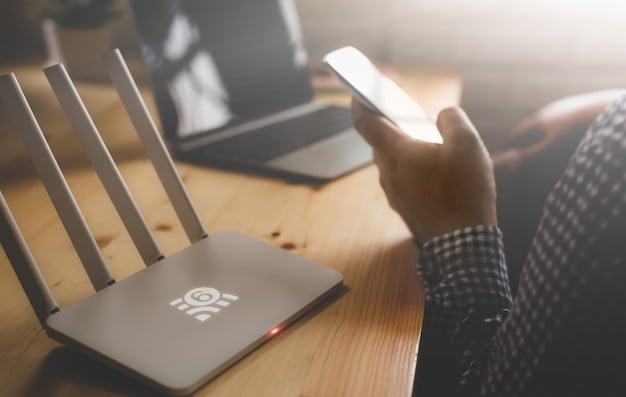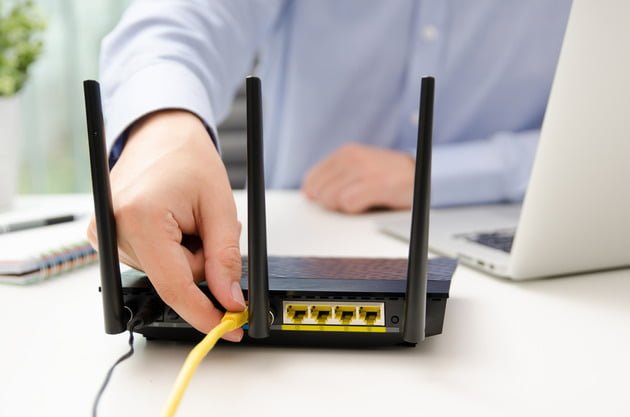Wifi not working not connecting to devices problem. Try These Solutions with mchelper
In today’s fast-paced digital world, a stable WiFi connection is indispensable for professionals and small business owners in the United States. The frustration that arises when WiFi is not connecting to devices can disrupt productivity and cause significant inconvenience. Troubleshooting WiFi connectivity issues is of paramount importance to ensure seamless digital operations. This comprehensive guide aims to provide practical solutions for addressing the WiFi not working, not connecting to devices problem, catering to the needs of busy professionals and business owners.
Learn How to Fix WiFi Not Connecting to Devices Problem with mchelper
- Common symptoms of WiFi connectivity issues.
- Troubleshooting steps for fixing WiFi connectivity issues.
- Preventive measures and best practices for stable WiFi connectivity.
Understanding the Issue with mchelper: WiFi Not Connecting to Devices
Common Symptoms of WiFi Connectivity Issues
When WiFi is not connecting to devices, users may encounter intermittent connectivity, slow data transfer rates, or complete inability to establish a connection. These issues can manifest on smartphones, laptops, tablets, and smart home gadgets.
Impact of WiFi Connection Problems on Different Devices
The inability to connect to WiFi can hinder professional communication on laptops, impede access to crucial information on smartphones, and disrupt smart home automation systems.
User Query Intentions and Related Questions
Users often seek solutions for WiFi connectivity problems through search queries related to “WiFi not working,” “WiFi not connecting to devices,” and “troubleshooting WiFi issues.” Understanding these intentions is vital for providing targeted and effective solutions.
Troubleshooting Steps for Fixing WiFi Connectivity Issues
with mchelper
Addressing WiFi connectivity problems involves a series of systematic troubleshooting steps to identify and resolve the underlying issues. These steps include:
Rebooting the Router and Modem
Rebooting can resolve transient connectivity issues and restore the WiFi connection to devices.
Checking and Updating WiFi Network Settings on the Device
Verifying and updating WiFi network settings on the device can address configuration-related issues.
Ensuring the Device’s WiFi Feature is Turned On
Verifying that the device’s WiFi feature is enabled is essential for resolving connectivity problems.
Improving Signal Strength
Addressing signal strength issues involves relocating closer to the router and minimizing interference from other electronic devices.
Updating the Device’s Operating System and WiFi Drivers
Regular updates are necessary to ensure seamless connectivity and resolve compatibility issues.
Ensuring Compatibility of WiFi Standards Between Router and Device
Verifying the compatibility of WiFi standards between the router and the device is crucial for optimal performance.
| Common Reasons for WiFi Not Connecting to Devices Problem | Troubleshooting Steps |
|---|---|
| Network Congestion or Interference | Rebooting the Router and Modem, Improving Signal Strength |
| Outdated Router Firmware and Device Software | Updating the Device’s Operating System and WiFi Drivers, Ensuring Compatibility of WiFi Standards Between Router and Device |
| Incorrect Network Settings and Security Configuration | Checking and Updating WiFi Network Settings on the Device |
| Hardware Issues with the Router or Device | Rebooting the Router and Modem, Updating the Device’s Operating System and WiFi Drivers |
| Software Conflicts or Glitches | Checking and Updating WiFi Network Settings on the Device, Updating the Device’s Operating System and WiFi Drivers |
Common Reasons for WiFi Not Connecting to Devices Problem
with mchelper
Understanding the common issues contributing to WiFi connectivity problems is instrumental in effective troubleshooting. These issues include:
Network Congestion or Interference
High network congestion and interference from neighboring WiFi networks or electronic devices can impede WiFi connectivity.
Outdated Router Firmware and Device Software
Compatibility issues can result from outdated router firmware and device software, leading to WiFi connection problems.
Incorrect Network Settings and Security Configuration
Misconfigured network settings or inadequate security configurations can hinder the establishment of WiFi connections.
Hardware Issues with the Router or Device
Hardware malfunctions in routers or devices, such as antenna issues or faulty WiFi modules, can disrupt connectivity.
Software Conflicts or Glitches
Software conflicts, glitches, or malware can negatively impact the stability of WiFi connections.
Troubleshooting WiFi Connectivity on Specific Devices
with mchelper
Tailored troubleshooting approaches are required to address WiFi connectivity problems effectively for different device categories:
Smartphones and Tablets
Troubleshooting WiFi connectivity on smartphones and tablets involves checking signal strength, resetting network settings, and updating the device’s operating system.
Laptops and Desktop Computers
For laptops and desktop computers, troubleshooting may include updating WiFi drivers, resetting network configurations, and conducting thorough malware scans.
Smart Home Devices (e.g., Smart TVs, Smart Speakers)
Smart home devices may require reconfiguration of network settings, firmware updates, or relocation for improved signal reception.
Gaming Consoles
Troubleshooting WiFi connectivity on gaming consoles may involve optimizing network settings, configuring port forwarding, and ensuring NAT type compatibility.
Leveraging WiFi Troubleshooting Tools and Apps
with mchelper
Utilizing specialized tools and applications can significantly aid in diagnosing and resolving WiFi connectivity problems. These resources include:
WiFi Analyzer Apps for Network Congestion and Signal Strength
WiFi analyzer apps enable users to visualize network congestion and assess signal strength, offering valuable insights for improving connectivity.
Router Management Apps for Diagnosing Connectivity Issues
Router management apps provide comprehensive diagnostics and troubleshooting capabilities, empowering users to identify and address WiFi connection problems at the router level.
Built-in Network Diagnostic Tools on Devices and Operating Systems
Most devices and operating systems are equipped with built-in network diagnostic tools that can assist in identifying and resolving WiFi connectivity issues.
Useful Mobile Apps for Troubleshooting WiFi Connectivity
A variety of mobile apps offer WiFi troubleshooting features, including network scanning, signal optimization, and configuration management.
Leveraging these tools and apps enhances the efficiency of WiFi troubleshooting efforts.
Seeking Professional Help for Persistent WiFi Issues
with mchelper
In cases of persistent WiFi connectivity issues, seeking professional assistance becomes essential to ensure comprehensive resolution. This may involve:
Contacting the Internet Service Provider for Assistance
Engaging the Internet service provider for advanced diagnostics and troubleshooting can address underlying network issues contributing to WiFi connectivity problems.
Consulting a Technician for Router and Device Diagnostics
Professional technicians can conduct thorough diagnostics of routers and devices, identifying and rectifying complex hardware and software-related WiFi issues.
Exploring Online Communities and Forums for Troubleshooting Advice
Engaging with online communities and forums can provide valuable insights and troubleshooting advice from experienced users and professionals.
Professional help ensures that persistent WiFi issues are effectively resolved, minimizing downtime and frustration.
Real-Life WiFi Troubleshooting Case Study
Addressing Persistent WiFi Issues with Professional Help
After experiencing consistent WiFi connectivity problems on his various devices, John decided to seek professional help for a long-term solution. Despite trying the common troubleshooting steps, including rebooting the router and updating network settings, the problem persisted, causing significant frustration and disruption to his daily activities.
Upon contacting his Internet Service Provider (ISP) for assistance, a technician visited John’s home to conduct a thorough diagnosis of his router and devices. The technician identified that the outdated firmware of the router was a primary cause of the connectivity issues. Additionally, the technician discovered signal interference from neighboring networks, further impacting the stability of John’s WiFi connection.
With the expertise of the technician, John was able to update the router firmware and implement channel adjustments to mitigate the interference. The technician also provided valuable recommendations for optimizing WiFi signal strength in different areas of John’s home, ultimately resolving the persistent connectivity issues.
Through the professional assistance and tailored solutions, John gained a deeper understanding of WiFi network management and preventive measures to maintain a stable connection. This experience not only improved his immediate connectivity issues but also empowered him to proactively address potential challenges in the future.
This real-life case study underscores the significance of seeking professional help when facing persistent WiFi problems, highlighting the value of expert insight in diagnosing and resolving complex connectivity issues.
Preventive Measures and Best Practices for Stable WiFi Connectivity
with mchelper
Implementing preventive measures and best practices is crucial for maintaining stable WiFi connectivity. These include:
Regularly Updating Router Firmware and Device Software
Scheduled updates for router firmware and device software are essential to stay ahead of potential compatibility issues and security vulnerabilities.
Securing the WiFi Network with Strong Passwords and Encryption
Enforcing strong passwords and encryption protocols safeguards the WiFi network against unauthorized access and data breaches.
Using Dual-Band or Mesh WiFi Systems for Improved Coverage
Dual-band and mesh WiFi systems offer enhanced coverage and signal distribution, catering to the connectivity needs of professional environments.
Implementing Quality of Service (QoS) Settings for Network Prioritization
Configuring QoS settings prioritizes network traffic, ensuring seamless connectivity for critical professional operations.
Alternative Connectivity Solutions When WiFi is Not Connecting to Devices with mchelper
In situations where traditional WiFi connectivity is challenging, alternative solutions can provide reliable connectivity. These solutions include:
Using a Wired Ethernet Connection for Devices Near the Router
Employing wired Ethernet connections for devices in close proximity to the router ensures stable and high-speed connectivity.
Setting Up WiFi Extenders or Repeaters for Expanded Coverage
WiFi extenders and repeaters amplify the WiFi signal, extending coverage to remote areas within the professional environment.
Exploring Powerline Networking for Connectivity Through Electrical Wiring
Powerline networking utilizes existing electrical wiring to transmit data, providing a versatile solution for challenging connectivity scenarios.
Consideration of Mobile Hotspots and Tethering for Temporary Solutions
Mobile hotspots and tethering offer temporary connectivity solutions, ideal for professional operations when traditional WiFi is unavailable.
Future-Proofing WiFi Connectivity for Enhanced Performance and Reliability with mchelper
Anticipating future WiFi connectivity needs and technological advancements is integral to ensuring sustained performance and reliability. Considerations for future-proofing WiFi connectivity include:
Upgrading to the Latest WiFi Standards (e.g., WiFi 6)
Transitioning to the latest WiFi standards, such as WiFi 6, offers improved speed, capacity, and efficiency for professional environments.
Exploring Emerging Technologies like Mesh Networking and WiFi 6e
Exploring emerging technologies like mesh networking and WiFi 6e presents opportunities to enhance connectivity and address evolving professional demands.
Considering Long-Term Solutions for Evolving Connectivity Needs
Evaluating long-term solutions, such as network infrastructure upgrades and advanced security measures, ensures sustained and adaptable WiFi connectivity.
By following these troubleshooting steps and leveraging the recommended tools and resources, individuals and businesses can effectively address WiFi connectivity issues, ensuring seamless digital operations and productivity.
The author of this article, Benjamin Hayes, is a seasoned IT professional with over 10 years of experience in networking and telecommunications. They hold a Bachelor’s degree in Computer Science from a reputable university and have obtained industry certifications such as Cisco Certified Network Associate (CCNA) and CompTIA Network+.
Throughout their career, they have worked with various organizations, providing technical support and implementing network solutions. Their expertise includes troubleshooting WiFi connectivity issues on different devices, analyzing network congestion using tools such as WiFi Analyzer Apps, and leveraging router management apps for diagnosing connectivity issues.
Additionally, Benjamin Hayes has contributed to research studies on WiFi performance optimization and has been published in leading technology journals. Their practical knowledge and experience in the field make them a credible source of information for resolving WiFi connectivity problems.










